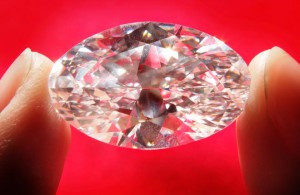People undergoing root canals may have gained a powerful yet tiny new ally — diamonds.
More than 15 million painful-yet-necessary root canal procedures are performed in the U.S. each year to protect us from tooth infections. But complications such as infection can arise post-surgery. Teeth infections can lead to tooth loss which is something the UCLA School of Dentistry is trying to prevent! In a new study at UCLA, they have found that these post-surgery infections can be warded off by a girl’s best friend: diamonds!
Nanodiamonds, specifically, were the subject of the researchers’ study. Thousands of times smaller than a human hair, at about four to five nanometers in diameter, nanodiamonds have the shape of very tiny soccer balls and are the byproduct of diamond mining and refining. They’ve also been widely explored for use in dentistry, cancer therapy, and regenerative medicine, among other applications. Combining the nanodiamonds with current root canal therapy, scientists at UCLA fortified a material that could significantly improve the outcomes of root canal patients.
Typically during a root canal, the area inside a tooth where there are nerves and blood vessels are is removed by dentists and refilled with a polymer called “gutta percha.” The purpose of the polymer is to act as a sealant and prevent future infection. However, gutta percha isn’t always successful in ridding a tooth of infection, in part due to the material not being a complete solid.
Using a compound that consisted of nanodiamonds and the traditional gutta percha mixture, the team at UCLA conducted an experiment on human teeth. One set of teeth was tested with nanodiamond-reinforced gutta percha while another set was tested with gutta percha by itself.
The traditional gutta percha mixture left small gaps in the canal — making the tooth susceptible to harmful bacteria. However, as predicted, the nanodiamond gutta percha mixture proved much stronger than traditional methods. By eliminating space for bacteria to fill within the tooth, the nanodiamond mixture allowed for a lower chance of infections or other complications following a root canal.
“The nanodiamond-enhanced gutta percha combines many desirable properties into a single platform, including vastly improved mechanical characteristics and the ability to combat bacterial infection following a root canal,” said UCLA study author Dong-Keun Lee in a press release.
Over the next two years, the team plans to optimize the nanodiamond-reinforced gutta percha formulation, and begin clinical trials at UCLA. To read more about this study or future research at The UCLA School of Dentistry, click here.
